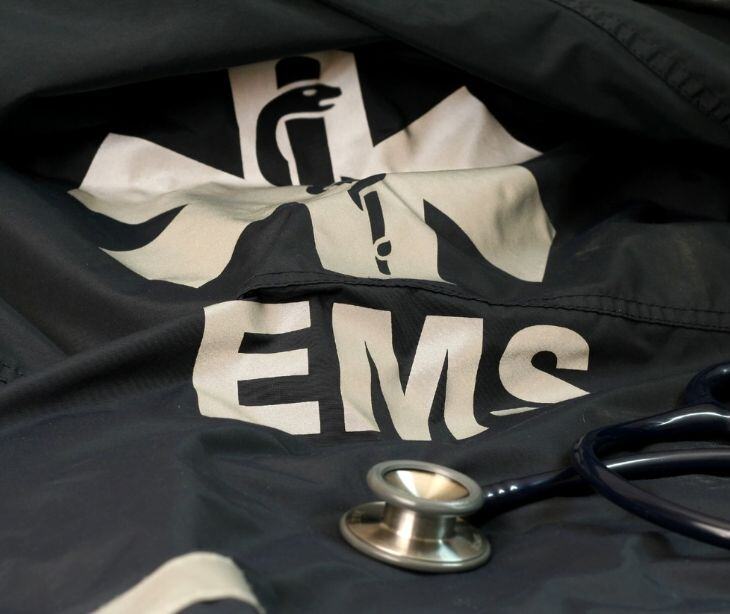3 min read
HIPAA and patient consent in emergency medical services (EMS)
Caitlin Anthoney May 29, 2024

In emergency medical services (EMS), providers must obtain informed, express, or implied consent appropriately to deliver effective care while safeguarding patient privacy.
Does HIPAA apply to emergency medical services (EMS)?
Yes. The NIH book on EMS legal and ethical issues explains “The federal HIPAA law extends to the prehospital realm and also the pre-hospital medical records and care.” So, “all reasonable care should be taken to maintain the confidentiality of the patient interaction and care, except when mandatory reporting is necessary [like] in cases of child abuse, elder abuse, sexual assault, stabbings, and gunshots.”
HIPAA requires that healthcare providers, including EMS providers, safeguard patients’ protected health information (PHI) from unauthorized access or breaches. Providers must also adhere to HIPAA’s minimum necessary standard, only accessing, using, or disclosing the minimum amount of PHI necessary to perform their duties.
However, in emergencies, HIPAA allows PHI to be shared without patient consent if it is in the patient's best interest, like when sending patient details to other healthcare providers.
Consent in EMS
Emergency providers must use a HIPAA compliant consent form to legally access and share a patient's medical information, ensuring that patient privacy is protected and that sensitive medical information is only shared with authorized individuals.
Informed consent
Ideally, patients should be informed about the treatment they will receive and voluntarily agree to it, understanding the nature of the treatment, potential risks, and benefits. According to the NIH book on EMS legal and ethical issues, “Informed consent is very important when treating any EMS patient. Without consent, it is unlawful to touch anyone, regardless of profession.”
Furthermore, “Treating or touching (for example, giving a physical exam, placing an IV, among others) a patient without consent can lead to a claim for battery, which is the unlawful touching of a party without their consent).”
Express consent
Express consent involves a clear, verbal, or written agreement from the patient. In most EMS situations, express consent is preferred, but due to the “variability of pre-hospital medicine, including location, safety, and the level of provider,” obtaining verbal or definitive consent is not always feasible before treatment.
Implied consent
In emergency situations where a patient cannot provide explicit consent, EMS providers can operate under implied consent. “This is the assumption that a patient who cannot give consent due to unconsciousness, another nonverbal circumstance, or to severe injury or severe medical illness, would normally consent to emergency treatment if they could convey their wishes,” explains the book.
For example, implied consent would apply to patients who are unconscious, nonverbal, severely injured, or suffering from severe medical conditions.
Consent for minors
The NIH book on EMS legal and ethical issues states that “Minors, or patients younger than 18 years old, cannot provide consent for treatment. Legal guardians, usually parents, must provide consent.”
So, providers must obtain consent from a parent or legal guardian before treating a minor. In emergency situations where parental consent is not available, healthcare providers may provide treatment under implied consent. Providers should also document the circumstances surrounding the treatment of a minor without parental consent to protect themselves legally while acting in the minor's best interest.
Additionally, some minors can provide self-consent if they are considered emancipated, meaning they are “are married, in any branch of armed services, have a history of pregnancy or are legally emancipated.”
Right to refuse treatment
Adults and emancipated minors have the right to refuse medical treatment regardless of the reason. The right to self-determination allows individuals to control what happens to their bodies, even if refusing treatment is detrimental to their health. However, the patient must “prove that can understand the risks, benefits, and alternatives” to refusing treatment.
More specifically, if the patient can articulate this understanding in their own words, the EMS provider should document that the patient has the capacity to refuse treatment. Ultimately, when a patient demonstrates capacity, they have the legal right to refuse medical treatment, even if it is against the provider's recommendation, and EMS providers must respect their autonomy.
Related: Using HIPAA compliant forms in emergency medical services (EMS)
FAQs
How can EMS providers obtain informed consent?
EMS providers can obtain informed patient consent by clearly explaining the treatment, the potential risks and benefits, and any alternatives available. The patient must then voluntarily agree to the treatment. This consent can be obtained verbally, in writing, or implied in emergencies where the patient cannot provide explicit consent due to their condition.
What is a HIPAA compliant consent form?
A HIPAA compliant consent form is a document that legally permits EMS providers to access and share a patient's medical information while ensuring the patient's privacy is protected. HIPAA compliant forms, like Paubox, use encryption and ensure that sensitive medical information is only disclosed to authorized individuals.
Can EMS providers share patient information with other healthcare providers?
Yes, EMS providers can use HIPAA compliant emails to share patient information with other healthcare providers. Additionally, they should only share the minimum necessary information needed for the other providers to perform their duties.
Subscribe to Paubox Weekly
Every Friday we'll bring you the most important news from Paubox. Our aim is to make you smarter, faster.



